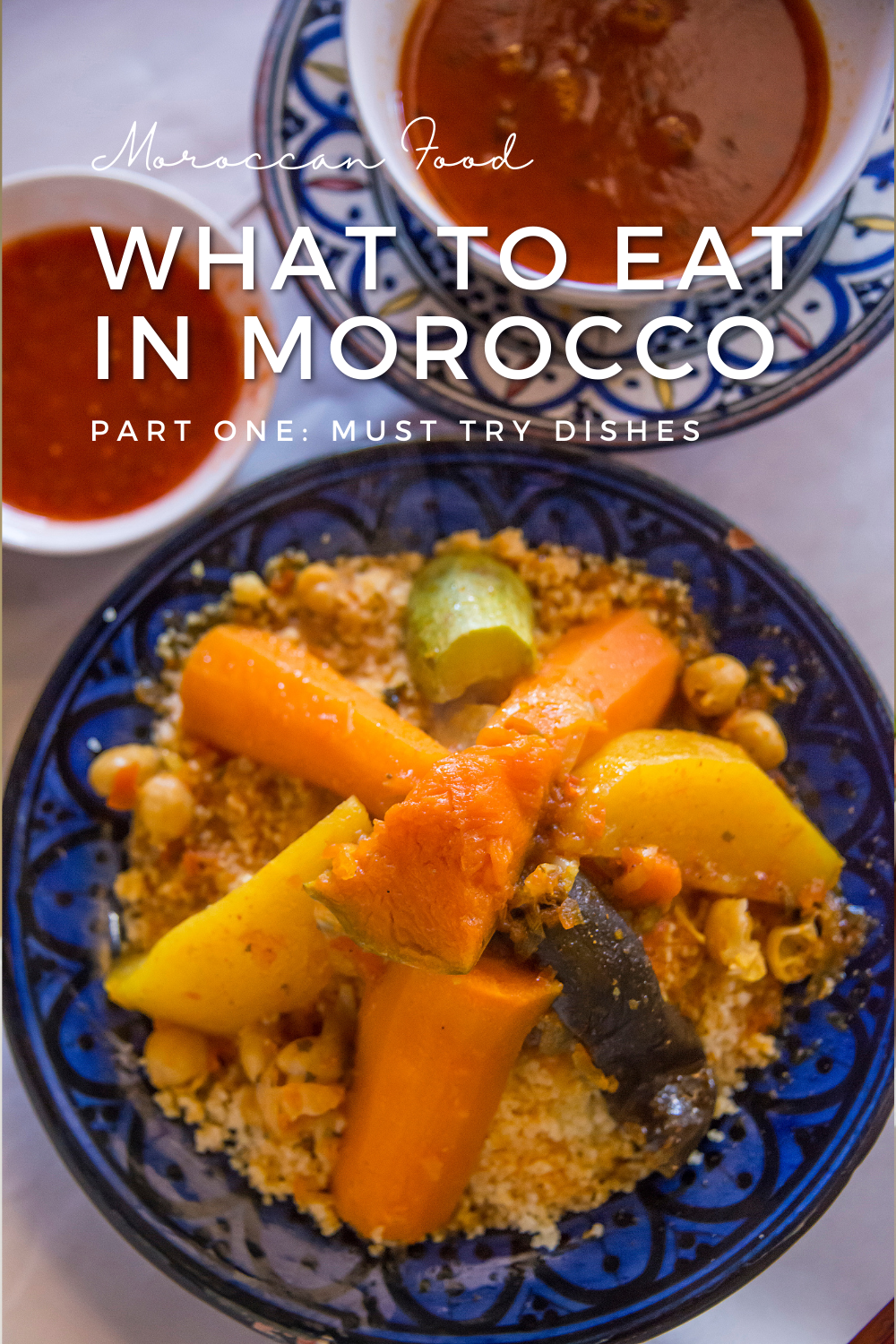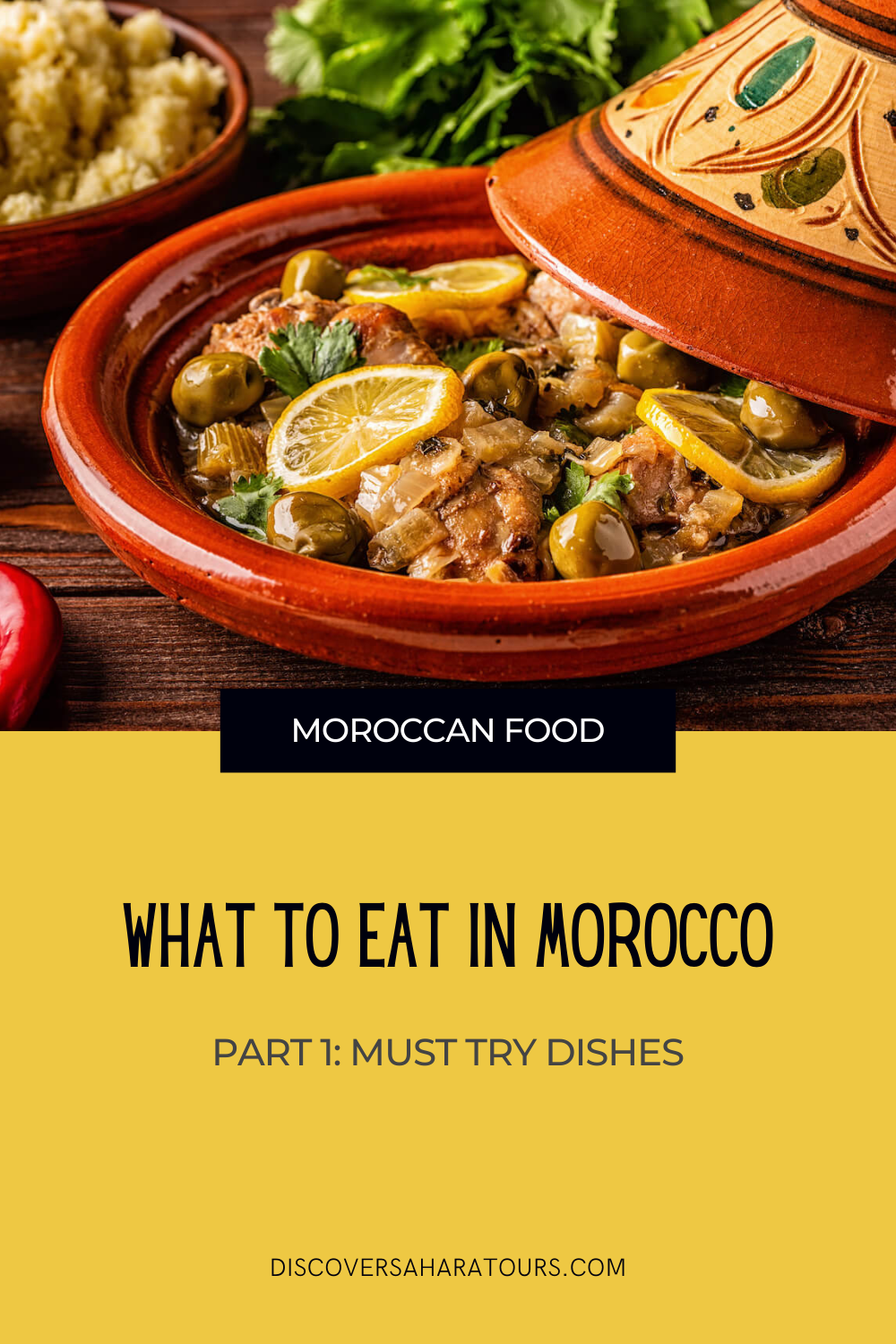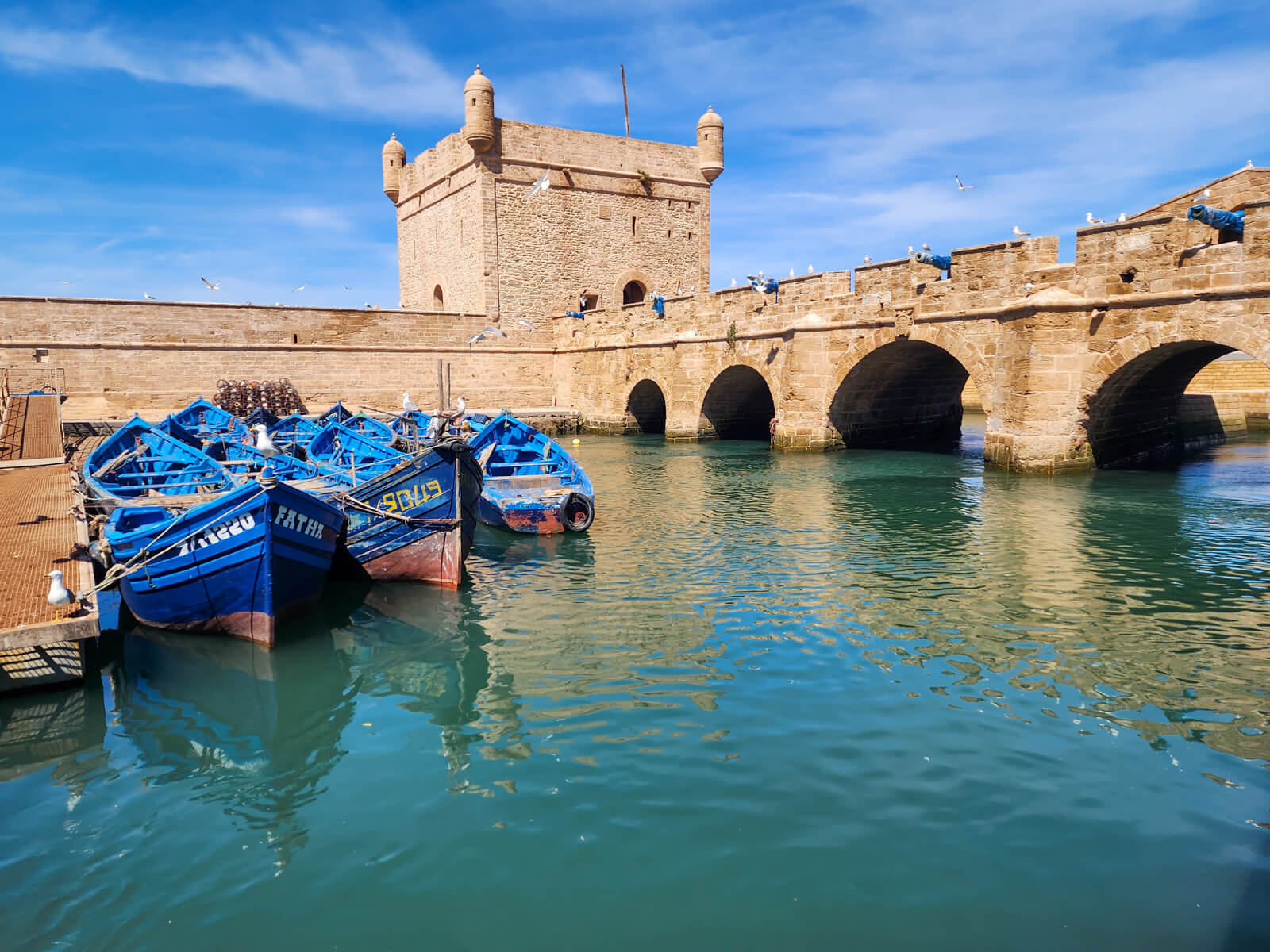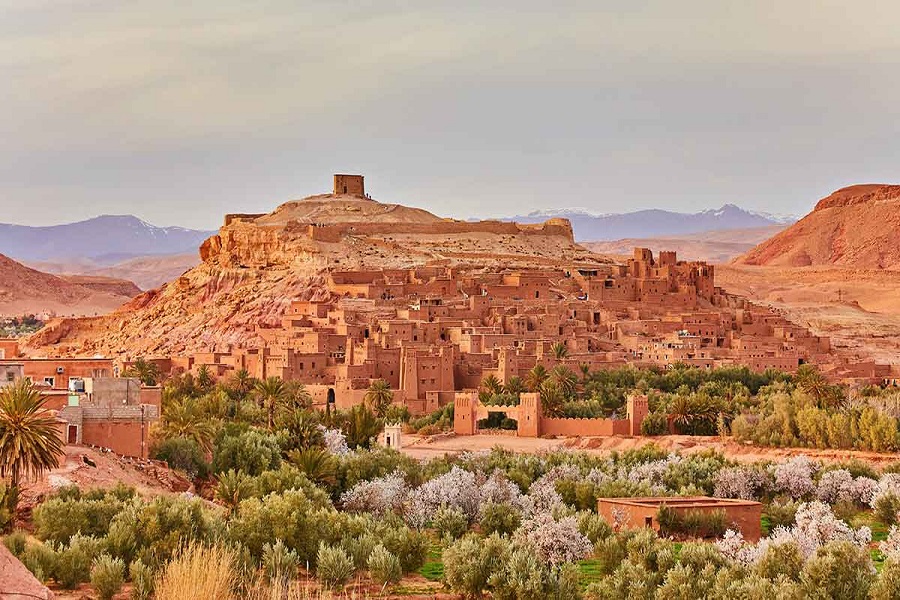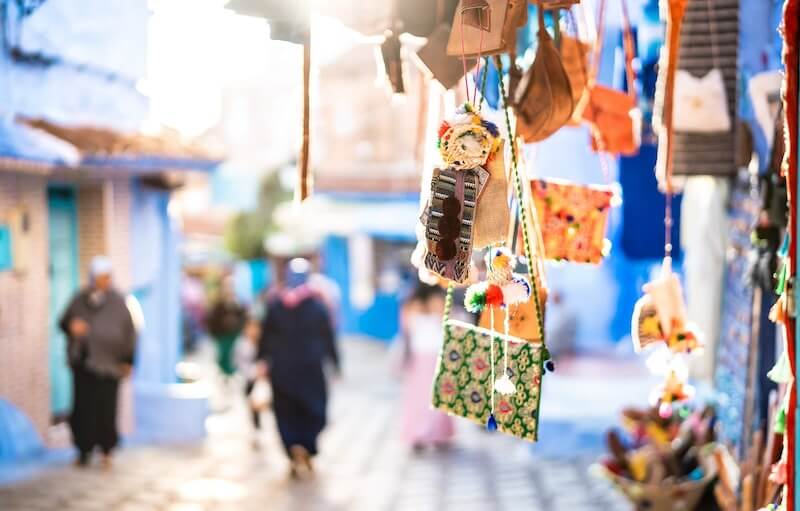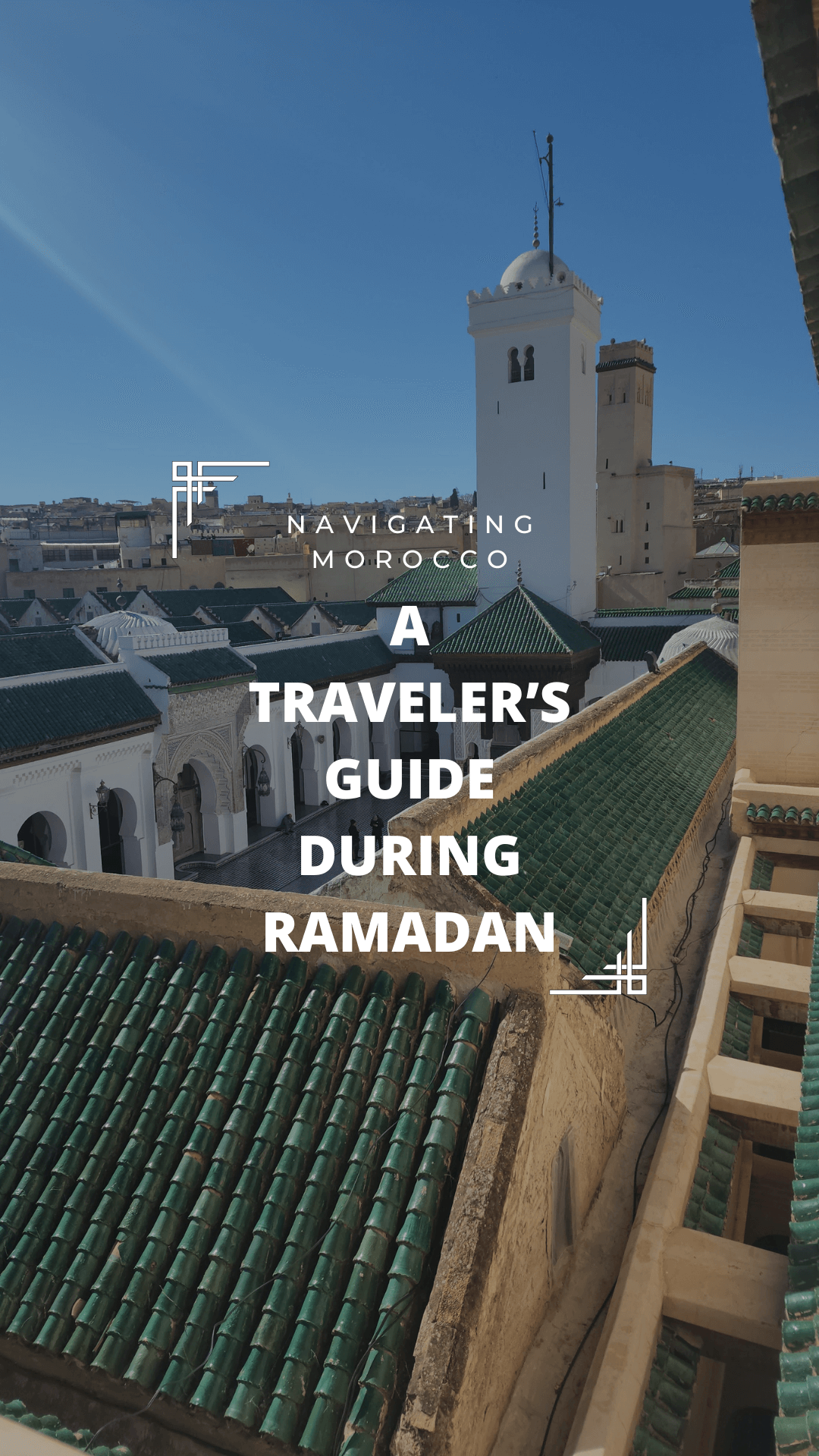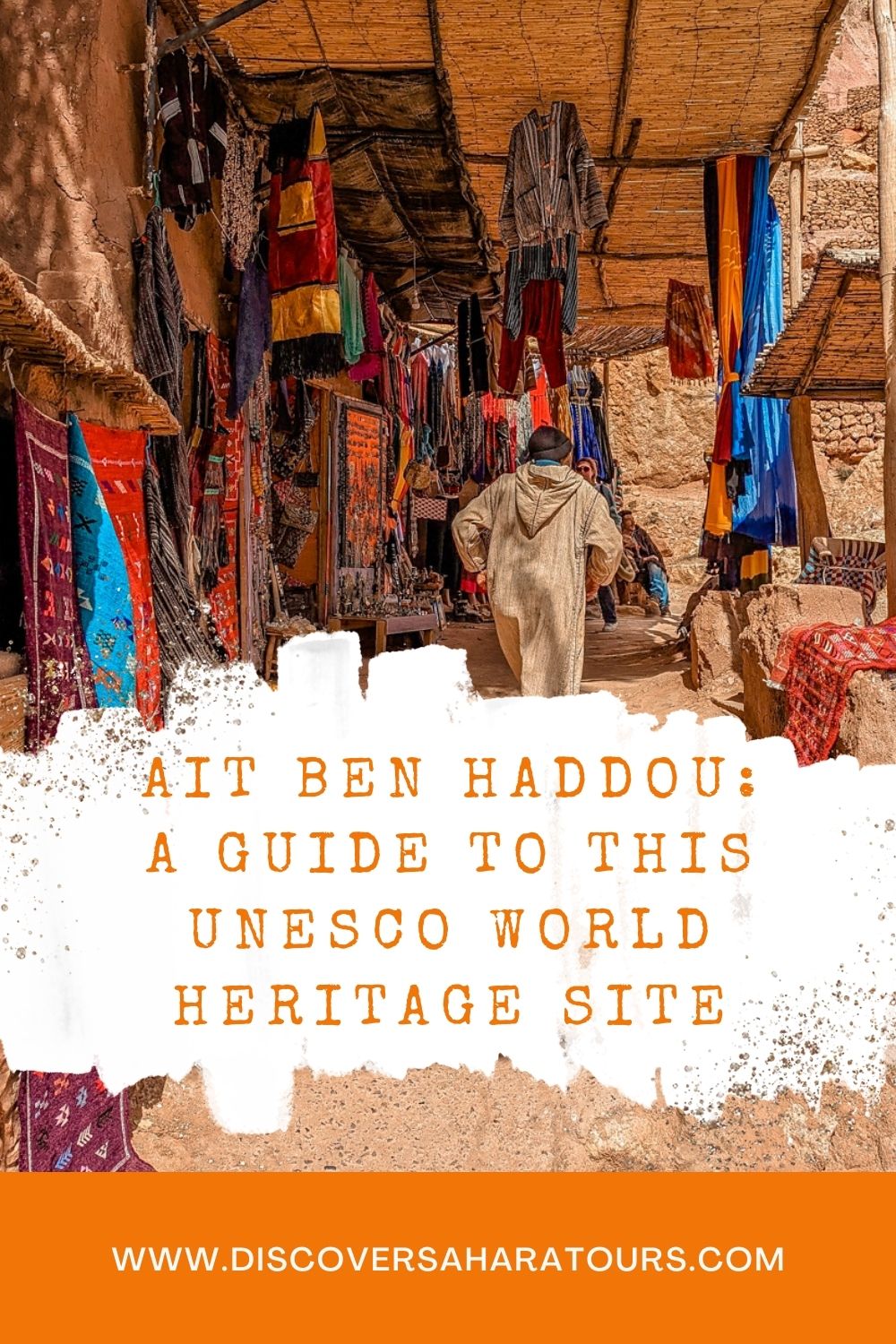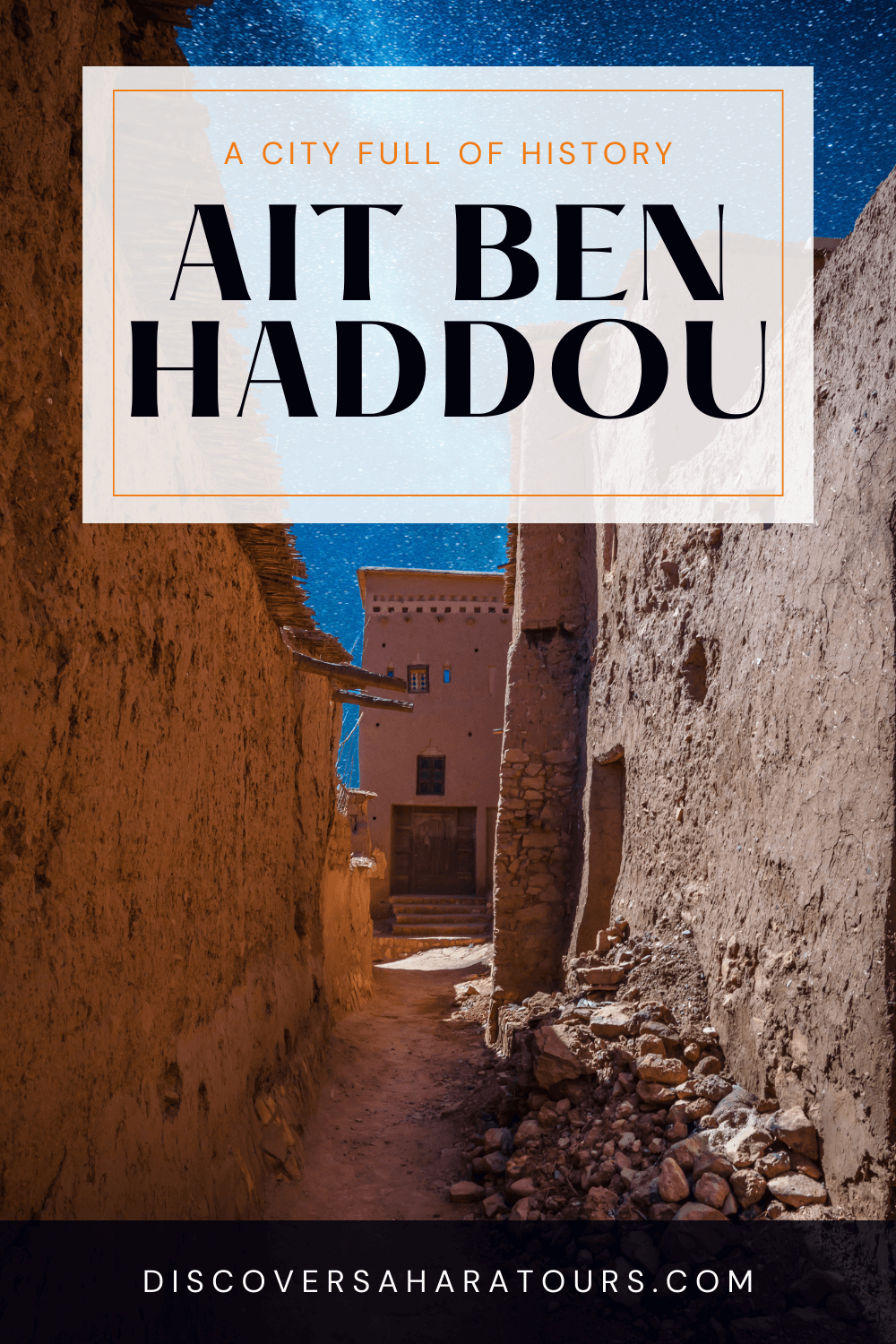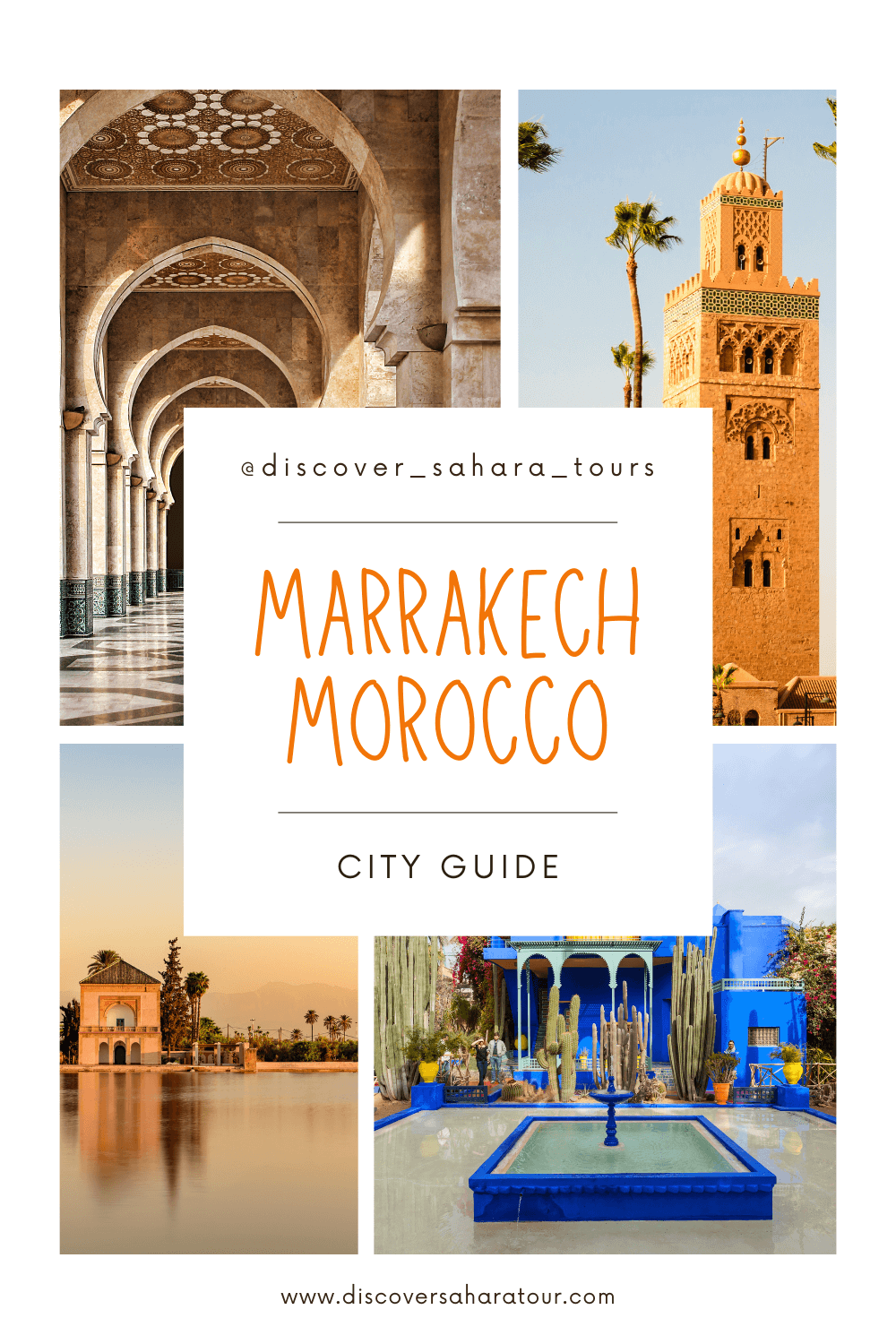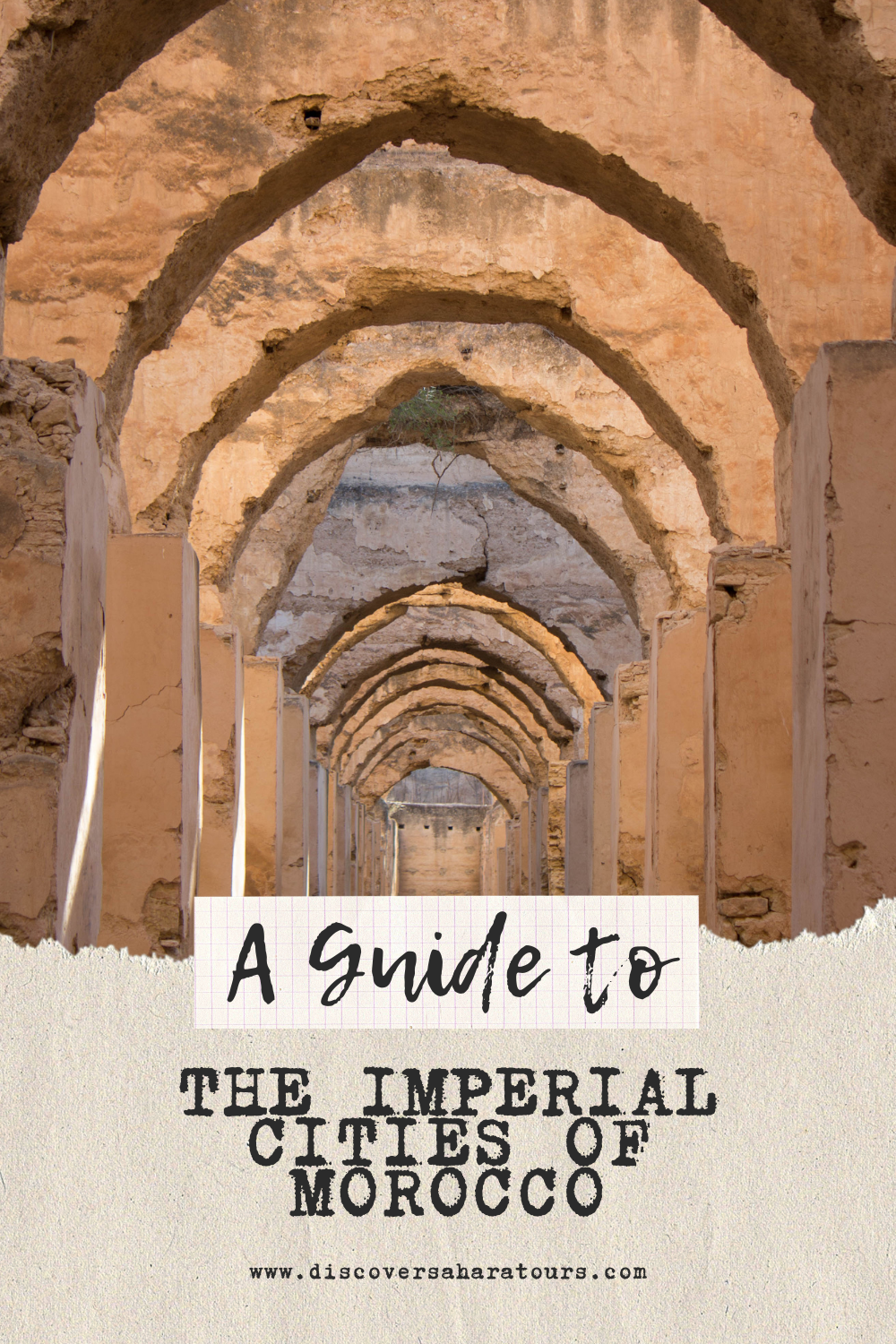What to Eat in Morocco – Part 1: Must Try Dishes
Travel is not complete without experiencing the flavors of the country. In this blog, we are going to look at the basic must-eat dishes when visiting Morocco, but be sure to check out parts 2, 3 and 4 to learn about snacks, street foods and some more adventurous dishes you should add to you list of things to try!
Craving a taste of Morocco? Here's what to eat:
Basic Must Try Moroccan Dishes
Harira
Harira is a traditional Moroccan soup that is commonly eaten during Ramadan to break the fast. Made with tomatoes, lentils, chickpeas, and different spices, this hearty soup will warm you up from the inside out.
Harira has deep roots in Moroccan culture and history. It is believed to have originated from the Berbers, the indigenous people of North Africa, and has been passed down through generations. Today, it holds a place of pride in Moroccan cuisine, especially during the holy month of Ramadan. Families gather around to enjoy this nourishing soup, which symbolizes togetherness and celebration. Beyond Ramadan, harira is enjoyed year-round in many Moroccan households and is also frequently found in restaurants and street food stands, making it accessible to everyone.
Harira boasts a rich and dynamic flavor profile that is both comforting and invigorating. The base of tomatoes provides a subtle sweetness and tang, while the lentils and chickpeas add a satisfying earthiness and texture. The soup is seasoned with a symphony of spices, including ginger, cinnamon, saffron, and pepper, creating a harmonious blend of warmth and depth. The addition of fresh herbs like cilantro and parsley enhances the overall freshness, making each spoonful a burst of delicious and well-balanced flavors. Tasting harira is an experience that should not be missed!

Tagine
Tagine is not only a popular dish in Morocco but also has become synonymous with Moroccan cuisine. It's a slow-cooked stew made with meat (usually chicken or lamb), vegetables, and spices like saffron and cumin. The dish gets its name from the clay pot it is cooked in, which has a conical lid that helps retain heat and moisture.
Tagine offers a versatile canvas for a myriad of flavor combinations, each bringing out the unique characteristics of its ingredients. One of the most beloved variations is the Chicken with Preserved Lemon and Olives Tagine. This version features tender chicken pieces simmered with tangy preserved lemons, briny green olives, and a medley of spices such as ginger, turmeric, and black pepper. The preserved lemons impart a distinctive zestiness that permeates the dish, while the olives provide a savory counterbalance, resulting in a harmonious and aromatic experience.
Another delightful option is the Beef with Prunes Tagine. A perfect blend of sweet and savory, this tagine combines succulent beef chunks with sweet prunes, almonds, and a touch of honey. The slow-cooking process melds the flavors together, creating a rich and luscious stew where the prunes transform into soft, syrupy morsels that complement the hearty beef. Spices like cinnamon and ginger elevate the dish with their warm and inviting notes.
For vegetable lovers, there's the Vegetable Tagine, which is a vibrant medley of seasonal produce. Common vegetables used include carrots, zucchini, bell peppers, and potatoes, all simmered with tomatoes and fragrant spices. This vegetarian variant is often garnished with fresh herbs and can be enjoyed by itself or as a side dish.
No matter the combination, tagine remains a beloved and versatile dish, promising a delightful journey through the myriad flavors of Moroccan cuisine. Whether you prefer the tanginess of lemon, the sweetness of prunes, or the freshness of vegetables, there's a tagine to suit every palate and occasion.
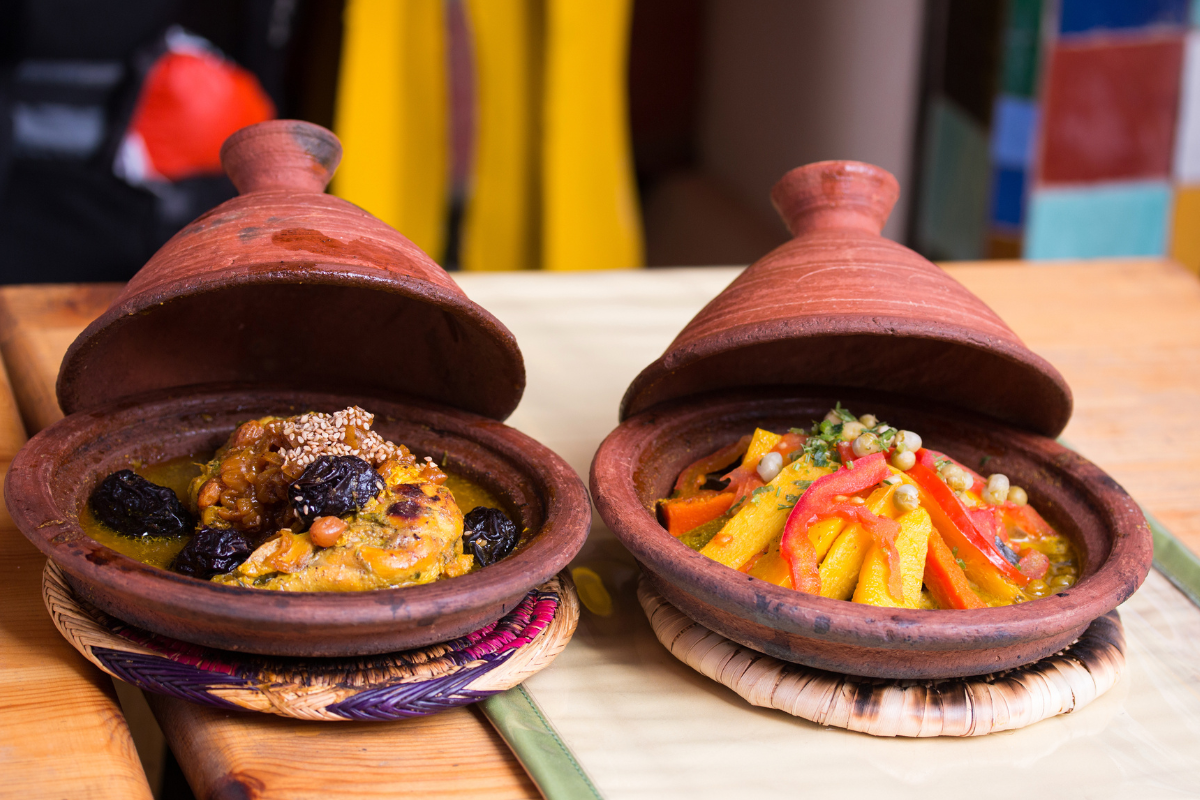
CousCous
Couscous is a staple in Moroccan cuisine, often referred to as the "national dish" of Morocco. Its history is deeply intertwined with the Berber culture, and this beloved dish has been enjoyed for centuries. The name "couscous" comes from the Berber word "seksu" or "k'seksu," which translates to "well-rolled" or "well-formed." Originally, couscous was a simple, hearty meal that provided sustenance to Berber communities living in the rugged terrain of North Africa.
Couscous holds a special place in Moroccan culinary traditions and is more than just a dish—it's a symbol of unity and community. Traditionally, couscous is prepared on Fridays, the holy day for Muslims, when families gather for a communal meal. The dish is also commonly served during celebrations, weddings, and other significant events, marking moments of joy and togetherness.
The preparation of couscous is an art form and involves meticulous attention to detail. It starts with semolina grains, which are sprinkled with water and then rolled by hand to form tiny granules. These granules are then steamed in a special pot called a couscoussier, which consists of two parts: the bottom pot, where a stew or broth is simmered, and the top section with tiny perforations, where the couscous is placed. The steam from the simmering stew rises through the perforations, gently cooking the couscous until it becomes light and fluffy.
A traditional Moroccan couscous dish often includes tender meat (such as lamb, chicken, or beef) and an array of vegetables like carrots, zucchini, and turnips. The ingredients are simmered together with a blend of aromatic spices including saffron, cumin, and cinnamon, creating a flavorful and enticing broth. Once the couscous is steamed to perfection, it is piled high on a large platter, and the meat and vegetables are arranged artfully on top. The dish is usually garnished with freshly chopped herbs and sometimes toasted almonds or raisins for added texture and flavor.
To enjoy couscous in true Moroccan style, it is often served family-style, with everyone gathering around the platter and scooping out portions with their hands or spoons. Each bite is a delightful combination of fluffy couscous, savory meat, and soft vegetables, all infused with the rich spices and fragrant broth that characterize Moroccan cooking.
Couscous is more than just food—it's a celebration of heritage, a testament to the artistry of Moroccan cuisine, and a delicious way to bring people together.

Pastilla
Pastilla, also known as Bastilla, is a remarkable Moroccan dish that beautifully blends sweet and savory flavors, creating a unique culinary experience. Originating in the city of Fes, pastilla is a testament to the rich history and diverse influences that shaped Moroccan cuisine. The dish has Andalusian roots, tracing back to the 15th century when Muslim Andalusians fleeing the Reconquista brought their culinary traditions to Morocco. Over time, these traditions evolved, giving rise to the distinct flavors and techniques found in pastilla.
Traditional pastilla is made with a delicate, flaky pastry known as warqa, which is similar to phyllo dough. This thin pastry envelops a sumptuous filling typically made of pigeon or chicken, mixed with a savory blend of spiced almonds, onions, and beaten eggs. As if this rich filling weren't enough, the true hallmark of a pastilla is its finishing touch: a dusting of powdered sugar and a sprinkling of cinnamon on top. This layer of sweetness contrasts beautifully with the savory, spiced filling, creating a harmony of flavors that is both surprising and delightful.
Baking pastilla to a golden, crispy perfection requires skill and patience, making it a dish often reserved for special occasions and celebrations. It is a centerpiece at weddings, feasts, and family gatherings, where it is presented with pride and savored by all. The combination of textures—from the crunchy exterior to the tender, flavorful interior—coupled with the interplay of sweet and savory notes, make pastilla a dish that truly stands out in the rich tapestry of Moroccan cuisine.
Today, you can find pastilla available on menus across Morocco.
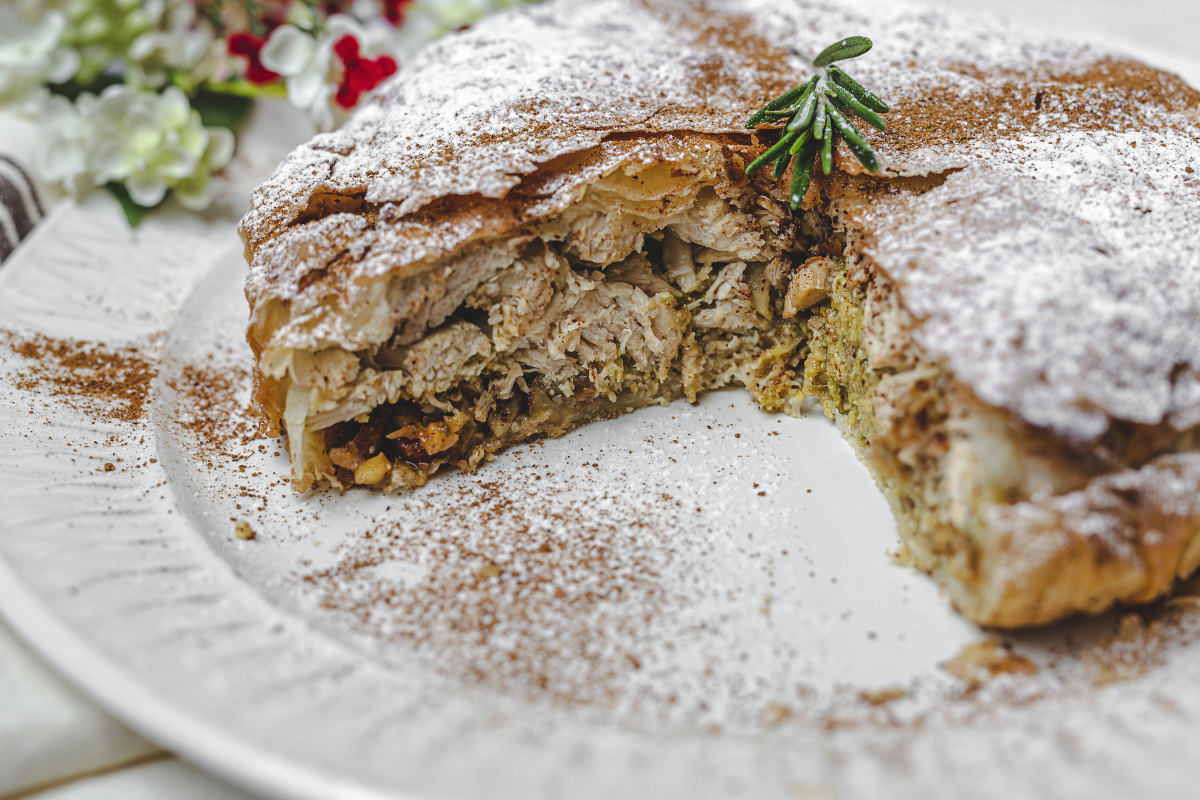
Fish chermoula
Fish Chermoula is a Moroccan dish that showcases the country’s coastal bounty and its rich culinary heritage. Chermoula itself is a versatile sauce or marinade brimming with robust flavors. Typically made with a blend of fresh herbs such as cilantro and parsley, garlic, lemon juice, olive oil, and a medley of spices including cumin, paprika, and coriander, chermoula can be used to enhance the flavors of various meats and vegetables. However, when paired with fresh fish, it creates an exquisite dish that truly celebrates the essence of Moroccan coastal cuisine.
The origins of Fish Chermoula trace back to Morocco’s long history of trade and interaction with various cultures. The coastal cities, which have always been pivotal trading hubs, have seen an exchange of spices, cooking techniques, and ingredients that have influenced local culinary practices. The use of herbs and spices in chermoula reflects these diverse influences, blending native Moroccan herbs with spices introduced through trade routes from the East and Africa.
Fish Chermoula gained popularity along the coast of Morocco due to the abundance of fresh seafood available. The bright, tangy, and fragrant chermoula complements the natural flavors of fish, making it a staple dish in households and seaside eateries alike. Fishermen often prepare Fish Chermoula as a simple yet flavorful way to enjoy their daily catch. The marinade can be used in several ways—either to coat the fish before grilling or baking or as a sauce gently poured over cooked fish.
What makes Fish Chermoula stand out is its ability to bring out the best in fresh seafood while adding layers of complexity to the dish. The zesty charm of lemon juice, the aromatic allure of herbs, and the warm spices come together to create a flavorful experience that is both comforting and invigorating. It is this harmonious balance of flavors and the deep connection to the sea that makes Fish Chermoula a perennial favorite along Morocco’s coastline.
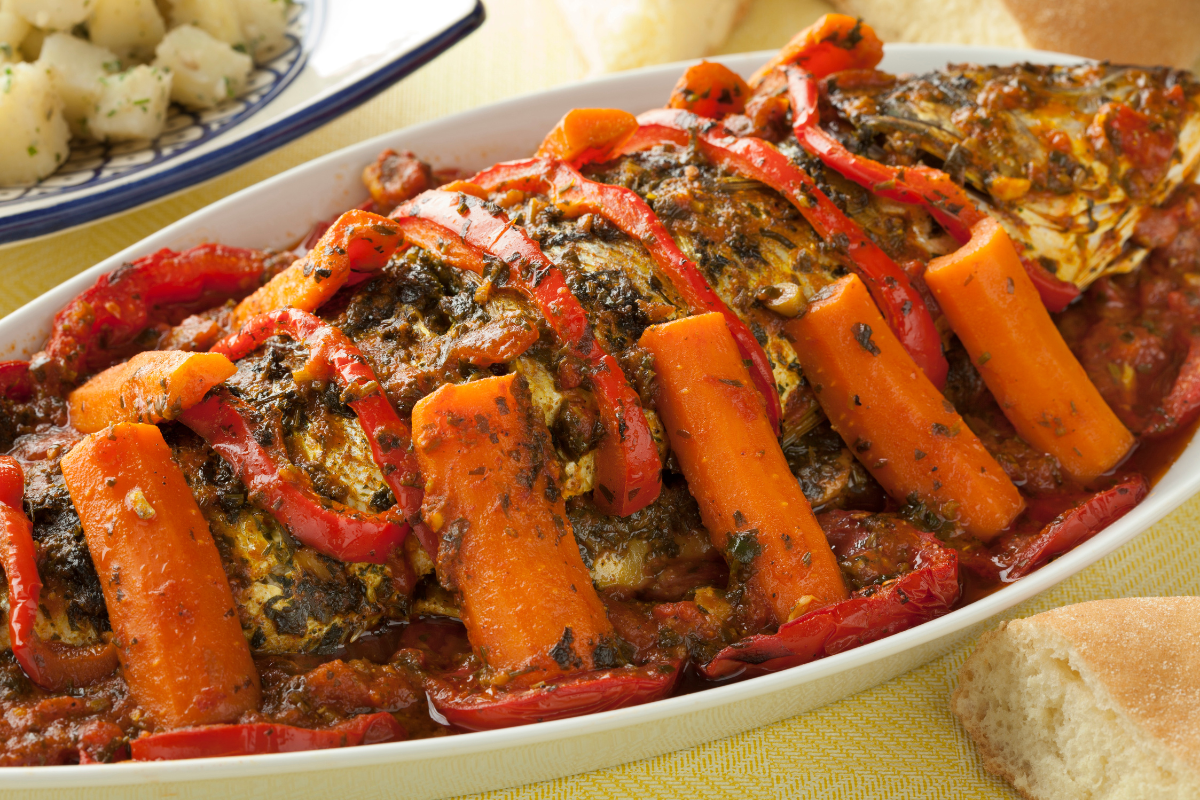
Kefta TaGine
Kefta Tagine is a hearty Moroccan dish that features spiced meatballs simmered in a rich, aromatic tomato sauce. The word "kefta" refers to the ground meat, often beef or lamb, which is mixed with fragrant herbs and spices before being shaped into small balls. The preparation of Kefta Tagine showcases the classic Moroccan technique of slow-cooking in a tagine, a traditional clay pot with a conical lid that helps to preserve moisture and enhance the flavors of the dish.
Kefta Tagine stands out from other tajines primarily due to its use of spiced meatballs as the main protein component, whereas many other tajines typically feature chunks of meat, fish, or vegetables. Additionally, the rich tomato-based sauce is a defining characteristic of Kefta Tagine. While other tajines can have a variety of sauces, ranging from sweet and fruity to savory and spiced, the deep, flavorful tomato sauce with its combination of warm spices gives Kefta Tagine its unique identity. The optional addition of poached eggs also adds an extra layer of texture and richness, making Kefta Tagine a distinctive and beloved dish in Moroccan cuisine.
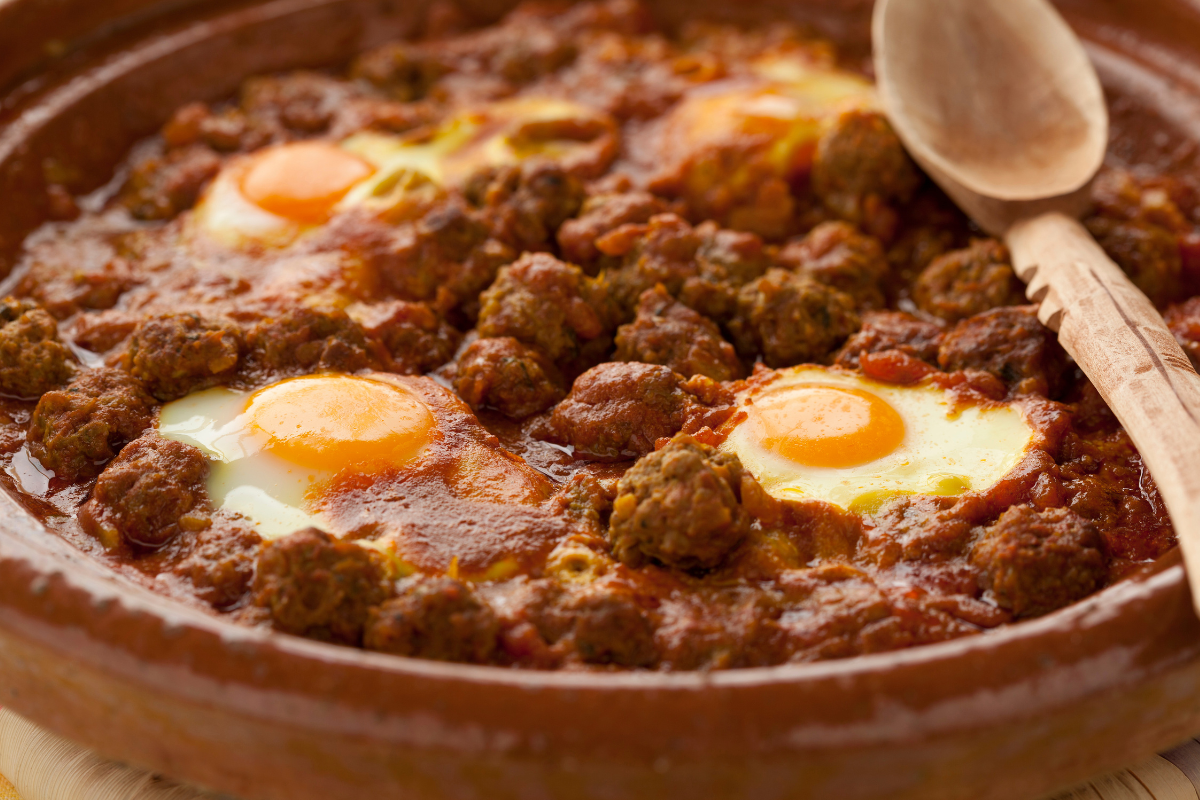
Moroccan cuisine is a vibrant tapestry of flavors, textures, and aromas that reflect the country's rich cultural heritage and diverse influences. Dishes like Tajine, Fish Chermoula, and Couscous are not just meals—they are culinary experiences that tell the stories of centuries-old traditions, the blending of cultures, and the artistry of Moroccan cooking. Each dish stands out for its unique combination of ingredients and techniques, showcasing the remarkable ability of Moroccan cuisine to surprise and delight the palate.
Exploring Moroccan food is about savoring the harmonious balance between sweet and savory, the intricate layering of spices, and the reverence for fresh, local ingredients. Whether it's the flaky, sweet-spiced Pastilla, the bright and zesty Fish Chermoula enjoyed by the sea, or the comforting Kefta Tagine simmering in a traditional clay pot, each dish offers a glimpse into the soul of Morocco.
As you delve into Moroccan cuisine, you'll discover that it's not just about food; it's about community, hospitality, and the joy of sharing a meal with loved ones. The rich, bold flavors and the stories behind each dish create a tapestry that is both inviting and enchanting. So, gather your friends and family, experiment with these recipes, and bring a touch of Moroccan magic to your table. Celebrate the heritage, culture, and sheer delight of Moroccan cuisine, and let your culinary adventures guide you through the heart of Morocco.
Still yearning for more food related info? Read on in this series to discover Starters, Snacks, and Sides that are can't miss, the Ultimate List of Street Foods you have to try and dive into the Dishes for the More Adventurous Eater as you eat your way across Morocco!
Pin It: Save This Page for Later!
